 W
WThomas Sylvester Barthel was a German ethnologist and epigrapher who is best known for cataloguing the undeciphered rongorongo script of Easter Island.
 W
WJohannes Alfred Buchmann is a German computer scientist, mathematician and professor emeritus at the department of computer science of the Technische Universität Darmstadt.
 W
WWilhelm Fenner was a German cryptanalyst, before and during the time of World War II in the OKW/Chi, the Cipher Department of the High Command of the Wehrmacht, working within the main cryptanalysis group, and entrusted with deciphering enemy message traffic (Cryptography). Wilhelm Fenner was considered an excellent organizer, an anti-Nazi, an anti-Bolshevik and a confirmed Protestant and was known by colleagues as someone who was keen to continue working in cryptology after World War II. To quote military historian David Alvarez:Wilhelm Fenner was the central figure in the evolution of the German Cipher Bureau between 1922 and 1939, and a major personality in the history of German communications intelligence in the interwar period. Under his direction, the Cipher Bureau evolved into a highly professional communications intelligence service, which scored impressive cryptanalytic successes against the diplomatic and military systems of many countries.
 W
WKarl Ludwig Föppl was a German mechanical engineer who succeeded his father, August Föppl as Professor of Technical Mechanics at the Technical University of Munich. During World War I, Föppl worked as a cryptanalyst. During World War II he worked as a mathematician and cryptographer, initially in Inspectorate 7/VI, and later in the war within General der Nachrichtenaufklärung.
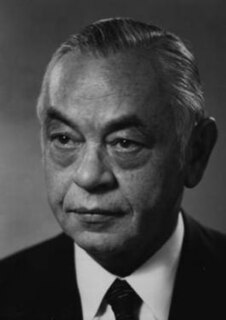 W
WWalter Ernst Fricke was a distinguished German professor of theoretical astronomy at the University of Heidelberg. He was a mathematician and cryptanalyst during World War II at the Wehrmacht signals intelligence agency, Inspectorate 7/VI from 1941 to 1942 (which would later become the General der Nachrichtenaufklärung. In 1942 he was transferred to the OKW/Chi Section IIb. His specialty was the production of codes and ciphers, and the security studies of Army systems. After the war he was director of the Astronomical Calculation Institute in Heidelberg, Germany.
 W
WHelmut Grunsky was a German mathematician who worked in complex analysis and geometric function theory. He introduced Grunsky's theorem and the Grunsky inequalities.
 W
WGeorg Karl Wilhelm Hamel was a German mathematician with interests in mechanics, the foundations of mathematics and function theory.
 W
WGisbert F. R. Hasenjaeger was a German mathematical logician. Independently and simultaneously with Leon Henkin in 1949, he developed a new proof of the completeness theorem of Kurt Gödel for predicate logic. He worked as an assistant to Heinrich Scholz at Section IVa of Oberkommando der Wehrmacht Chiffrierabteilung, and was responsible for the security of the Enigma machine.
 W
WAlfred Emil Richard Kneschke was a German mathematician, engineer and university lecturer. During the World War II, Kneschke managed the Referat IV, Section II of the Wehrmacht Signals intelligence organization General der Nachrichtenaufklärung until November 1944, working on cryptanalysis and decoding of British, USA, French and Balkan cipher systems. From Nov 1944, he worked in the OKW/Chi cipher bureau as a cryptanalyst.
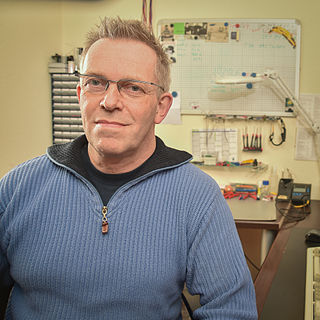 W
WWerner Koch is a German free software developer. He is best known as the principal author of the GNU Privacy Guard. He was also Head of Office and German Vice-Chancellor of the Free Software Foundation Europe. He is the winner of Award for the Advancement of Free Software in 2015 for founding GnuPG.
 W
WRudolf Paul Joachim Kochendörffer was a German mathematician who was a Professor of mathematics in the University of Rostock specialising in algebra, Group theory and theory of finite groups and their representation. During World War II, Kochendörffer worked as a mathematical cryptanalyst in the mathematical referat of Inspectorate 7/IV, that would later become part of Referat I of Group IV of the General der Nachrichtenaufklärung, the signals intelligence agency of the Wehrmacht and was known as a cryptographic tester of the Enigma cipher machine. Kochendörffer was a Member of the Scientific Advisory Council for Mathematics at the State Secretariat for the Higher and Specialist Schools of the GDR, a staff member of Mathematical Reviews and collaborated with the Zentralblatt MATH
 W
WTanja Lange is a German cryptographer and number theorist at the Eindhoven University of Technology. She is known for her research on post-quantum cryptography.
 W
WOtto Leiberich was a German cryptologist and mathematician. Leiberich is most notable for establishing the Bundesamt für Sicherheit in der Informationstechnik in 1991.
 W
WKarsten Nohl is a German cryptography expert and hacker. His areas of research include Global System for Mobile Communications (GSM) security, radio-frequency identification (RFID) security, and privacy protection.
 W
WWilli Ludwig August Rinow was a German mathematician who specialized in differential geometry and topology. Rinow was the son of a schoolteacher. In 1926, he attended the Humboldt University of Berlin, studying mathematics and physics under professors such as Max Planck, Ludwig Bieberbach, and Heinz Hopf. There, he received his doctorate in 1931. In 1933, he worked at the Jahrbuch über die Fortschritte der Mathematik in Berlin. In 1937, he joined the Nazi Party. During 1937—1940, he was an editor of the journal Deutsche Mathematik. In 1937, he became a professor in Berlin and lectured there until 1950. His lecturing was interrupted because of his work as a mathematician at the Oberspreewerk in Berlin from 1946 to 1949.
 W
WHans Rohrbach was a German mathematician. He worked both as an algebraist and a number theorist and later worked as cryptanalyst at Pers Z S, the German Foreign Office cipher bureau, during World War II. He was latterly known as the person who broke the American diplomatic O-2 cypher, a variant of the M-138-A strip cipher during 1943. Rohrbach wrote a report on the breaking of the strip cypher when he was captured by TICOM, the allied effort to roundup and seize captured German intelligence people and material.
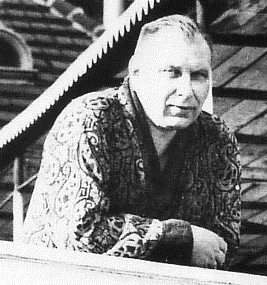 W
WHans-Thilo Schmidt codenamed Asché or Source D, was a spy who, during the 1930s, sold secrets about the Germans' Enigma machine to the French. The materials he provided facilitated Polish mathematician Marian Rejewski's reconstruction of the wiring in the Enigma's rotors and reflector; thereafter the Poles were able to read a large proportion of Enigma-enciphered traffic.
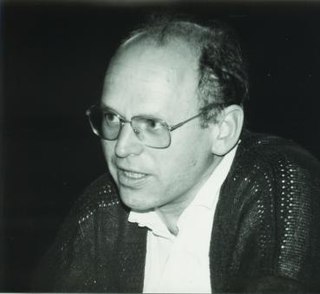 W
WClaus-Peter Schnorr is a German mathematician and cryptographer.
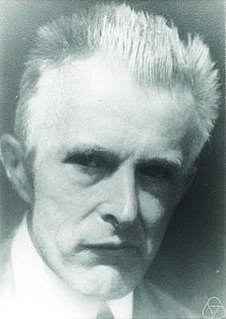 W
WHeinrich Scholz was a German logician, philosopher, and Protestant theologian. He was a peer of Alan Turing who mentioned Scholz when writing with regard to the reception of "On Computable Numbers, with an Application to the Entscheidungsproblem": "I have had two letters asking for reprints, one from Braithwaite at King's and one from a proffessor [sic] in Germany... They seemed very much interested in the paper. [...] I was disappointed by its reception here."
 W
WKarl Walter Schröter was a German mathematician and logician. Later on, after the war, he made important contributions concerning semantic consequences and provability logic. He worked as a mathematical theoretician and cryptanalyst for the civilian Pers Z S, the cipher bureau of the Foreign Office, from Spring 1941 to the end of World War II.
 W
WKarl Stein was a German mathematician. He is well known for complex analysis and cryptography. Stein manifolds and Stein factorization are named after him.
 W
WLudwig Stummel was a German career signals officer with the rank of Konteradmiral, who had a glass eye and a limp and who was in effect, the Chief of Staff of the Naval Warfare department, Naval Communications (4/SKL) of the Kriegsmarine. Stummel was most notable for being the person responsible for the cryptographical security of the Enigma cipher machine and Key M infrastructure security, during World War II. Stummel was replaced at the Kriegsmarine Naval War Command on the 16–17 August 1944 by Fritz Krauss, after becoming ill. Stummel was a vervant Catholic. His faith gave him a moral compass during the latter years of the war. Initially a supporter of Nazis. He became doubtful as the war progressed. He was released from the Kriegsmarine in February 1945.
 W
WPaul Julius Oswald Teichmüller was a German mathematician who made contributions to complex analysis. He introduced quasiconformal mappings and differential geometric methods into the study of Riemann surfaces. Teichmüller spaces are named after him.
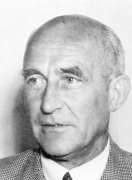 W
WWilhelm Tranow was a very successful German cryptanalyst, who before and during World War II worked in the monitoring service of the German Navy and was responsible for breaking a number of encrypted radio communication systems, particularly the Naval Cypher, which was used by the British Admiralty for encrypting operational signals and the Naval Code for encrypting administrative signals. Tranow was considered one of the most important cryptanalysts of B-service. He was described as being experienced and energetic. Little was known about his personal life, when and where he was born, or where he died.
 W
WMichael Waidner is a German computer scientist. He is director of the Fraunhofer Institute for Secure Information Technology and ATHENE, the largest research institute for IT security in Europe. He is also professor of security in information technology at the department of computer science of the Technische Universität Darmstadt.
 W
WErnst Witt was a German mathematician, one of the leading algebraists of his time.